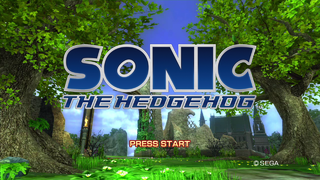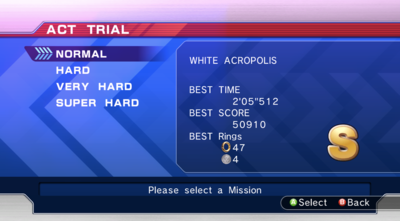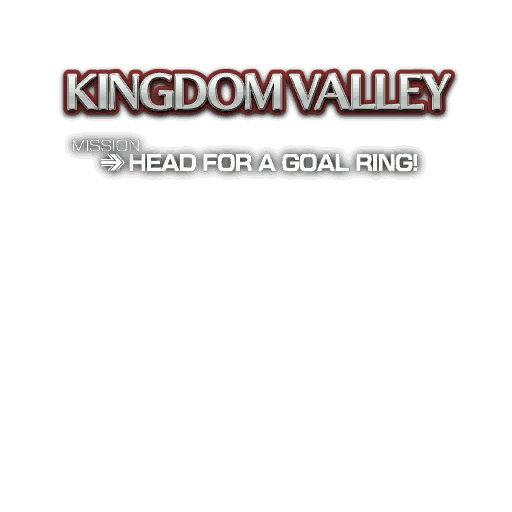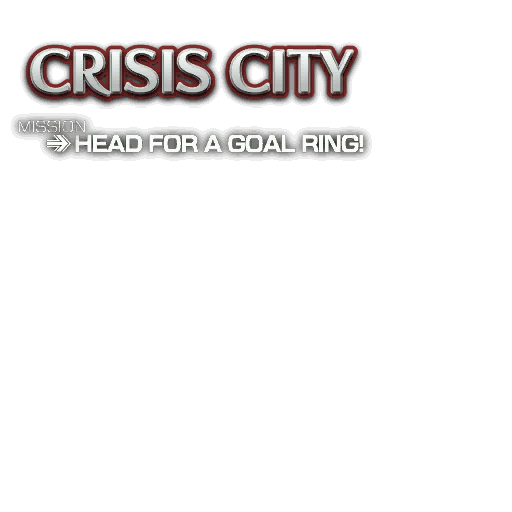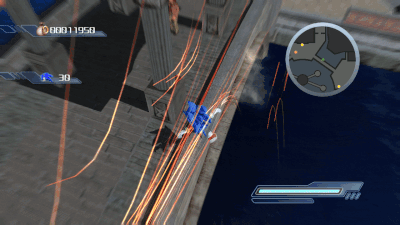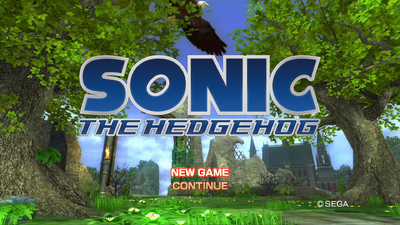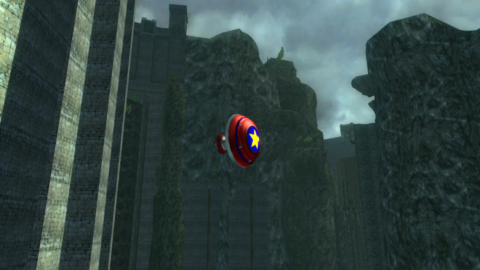User:Escape209/sonic 06 thing
| Sonic the Hedgehog |
|---|
|
Developer: Sonic Team
|
| This article is a work in progress. ...Well, all the articles here are, in a way. But this one moreso, and the article may contain incomplete information and editor's notes. |
| This page is loooong... Consider grouping related content into additional subpages to ease readability. |
Widely regarded as the nadir of the series, Sonic the Hedgehog (often referred to as "Sonic '06" to distinguish it from the 16-bit original and its derivatives/ports) was heavily and extensively rushed. Accordingly, many people who played the game agree it contains lots of bugs, poorly-implemented ideas, and plain bad design. There's also a lot of unfinished content and leftovers from development.
Also, loading. SO MUCH LOADING.
| To do: Most of this still needs to be documented:
|
Contents
- 1 Sub-Pages
- 2 Super Hard
- 3 Debugging Features
- 4 Early Soleanna Castle Town Textures
- 5 Early Assets
- 6 Unused Assets
- 7 Unused Menu Options
- 8 Unused Abilities
- 9 Unused Shield
- 10 Knuckles Has Cleared Act 1
- 11 Unused Music
- 12 Internal Project Name
- 13 Oddities
Sub-Pages
| Unused Animations E3 and TGS leftovers, plus stuff for scrapped mechanics. |
| Unused Objects Information on unused objects and their behavior. |
| Unused Text ??? You'll need to buy it to see what it does! |
| Unused Hints They never shut up! |
| Unused Layouts Crisis City was meant to be longer? |
Super Hard
To do:
|
Various different difficulties were planned for most stages. The final game only uses the Normal and Hard options (with Very Hard being used in DLC), there is a Super Hard difficulty menu option that goes completely unused.
Debugging Features
DevTitle
An unused animated title screen referred to internally as 'DevTitle' - pressing start will take you to a debug menu that unfortunately no longer renders, but is still functional. The sprite data was found for this awhile ago, but its functionality has been somewhat restored through hacking.
DevTitle Controls:
- Directional Pad - Move
- A/X/Start - Select
Sub-menus:
- StageSelectParameterStage - deserialises stage information from stageselect.lub.
- Uses the same controls as DevTitle.
- StageSelectParameterStage (?) - same as above.
- StageSelectParameterStory - boots back to the main menu to Episode Select.
- StateEndingMode - plays Sonic's credits sequence.
- Unknown (?) - possibly TestCellSpriteMode, but it doesn't appear to render anything.
- TestTextMode - displays text-related textures in a debugging view - by default, it displays the button prompts in their order of appearance in picture.pft.
- Left Analog Stick - Move
- Right Analog Stick - Scale
- Start - Reset
- Select - Change Sprite
DebugWait
All characters support unused debug modules found in common.lub which allows you to fly around with no-clip.
States:
- State Module: state_module_debug - enables the DebugWait state.
- Posture Control: posture_control_debug - enables debug movement.
- Input System: input_system_debug - enables debug controls.
Controls:
- Left Analog Stick/Directional Pad - Move.
- Left Bumper (L2) - Unlock all upgrades.
- Right Bumper (R2) - Increase Ring count by 99.
- Y (Triangle) - Increase height.
- A (Cross) - Decrease height.
ViewTexture
cache.arc contains a script called render_debug.lub that is loaded when the game starts up - this script contains only one function called ViewTexture. This appears to be early code for how the game renders the mini-map for the towns (as the code is functionally identical). By default, the debug version will copy the backbuffer and render it as separate windows. You can create more than one, which leads to interesting behaviour when they clip the edges of the screen.
Early Soleanna Castle Town Textures
In the first in-game cutscene for Sonic's episode, we see a version of Soleanna that's completely different to the terrain you actually get to play around in. The event ID for this cutscene is e0031 and has its own separate terrain folder from Soleanna's actual one, containing models and textures that are different. The textures used in e0031 appear to be early counterparts, as they're missing some text and effects, but are also set up correctly, unlike Soleanna's final textures.
Minor Differences
- The most relevant textures are slightly transparent in e0031, which is correct for the diffuse-specular configuration - they are opaque for Soleanna.
- twn_a1brick01_dfsp_b.dds was made brighter for Soleanna.
- twn_a1cring04_dfxx_b.dds, twn_a1cring05_dfxx_b.dds, twn_a1swalk58_dfsp_b.dds and twn_a1swalk60_dfsp_b.dds were made darker for Soleanna.
Major Differences
| e0031 | Final |
|---|---|
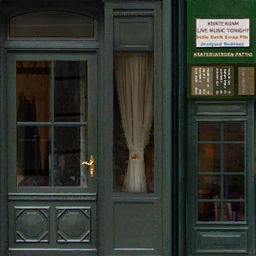 |
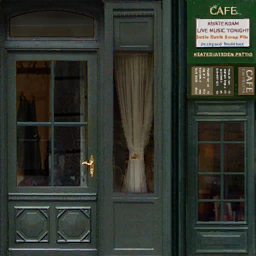 |
twn_a_h704_dfxx_c.dds was modified to add the word 'CAFE' for Soleanna.
| e0031 | Final |
|---|---|
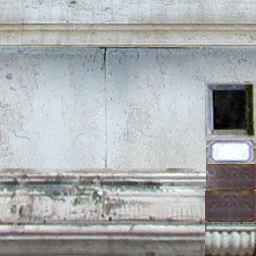 |
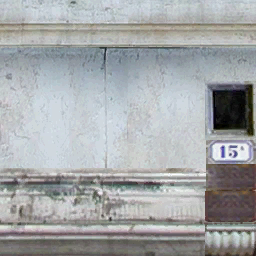 |
twn_a_h503_df_c.dds was also made darker, but was modified to add the number 15 for Soleanna.
| e0031 | Final |
|---|---|
 |
 |
twn_a_h039_df_c.dds had gaussian blur added to a portion of the texture for where it'd be mapped over a shop window.
| e0031 | Final |
|---|---|
 |
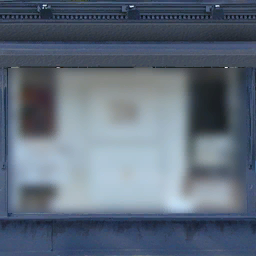 |
twn_a_h060_df_c.dds had gaussian blur added to a portion of the texture for where it'd be mapped over a shop window.
| e0031 | Final |
|---|---|
 |
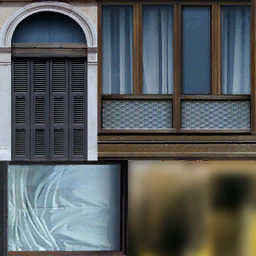 |
twn_a_h097_df_c.dds had gaussian blur added to a portion of the texture for where it'd be mapped over a shop window.
Early Assets
Early Xbox 360 Controller Icons
The XBLA demo has the LT and RT trigger icons shaped more like traditional triggers and the LB and RB bumpers are more rounded. Some of these controller icons go unused, due to such buttons not being assigned at all.
Early Game Icon
This image appears to be an early version of the game's icon. It's located in system.arc as sonicnexticon.png.
Unused Assets
Sonic's Mouth
Sonic usually only has one texture on his mouth in-game, where he grins. However, there exist two more unused expressions that were intended to be used alongside his different facial animations. The first has him smiling more enthusiastically and showing some teeth, similarly to his render in Sonic Heroes. This was intended to accompany the "squinting" animation used during Sonic's run animation and some of his moves. Strangely, the unmapped part of the normal map is wrong - the used file has a light blue instead of this file's magenta. The game still accepts it unmodified, though.
A similar texture was used on Sonic's face in the TGS 2005 teaser for this game.
The second expression is for frowning. It's very similar to Shadow's mouth texture, but he uses the one in his own archive. This was intended for Sonic's idle animation.
Unused Jump Panel
An unused model of the Jump Panel identical to the one used in Sonic Unleashed onwards. The final game uses the same Jump Panel model from Sonic Heroes and Shadow the Hedgehog, but this model's presence seems to suggest the Unleashed design was supposed to be introduced here.
E3 Leftovers
Two loading screens from the E3 demo can be found in the folder containing results screen assets. They were intended to be overlaid on top of the empty striped box in the upper-left corner. Note that both of them state "Head for a Goal Ring!"
Multiplayer
Several graphics related to a early version of multiplayer mode still exist in the game's data. Note that these graphics go up to four players, but the final game's multiplayer only allows 2 players, and only lets you pick between three characters (Sonic, Shadow, and Silver), implying more characters (such as the various "amigo" characters) were able to be picked earlier in development.
Unused Icons/Rainbow Gem
Some of these HUD icons are not used in the game. The first 7 gems are normally obtainable, however the rainbow-colored one is not. A reference to it can still be found in the final game's text file for the shop, stating "???: You'll need to buy it to see what it does!"
Originally, there was going to be a Gem that could be purchased at the store which would allow you to play as Super Sonic in more than just the final stage (similar to how it was in Sonic 2, Sonic 3, and Sonic & Knuckles whenever all seven Chaos Emeralds were collected).
This said, the item can still be accessed through hacking, but isn't fully functional. All it does is make Sonic perform a transformation animation and float in place for a few seconds, with no effect otherwise.
The icons that clearly don't fit in a texture named gem.dds are more fit for collectibles or missions;
- There's an unused HUD element that acts as a counter for Bronze Medals, despite actually using the Silver Medal icon seen here.
- The blue arrows could suggest a lap count for races.
- The flat shaded ring could be for pass rings in missions.
- The head could be related to NPCs that the player must guide.
- The dog could be related to dogs that the player must guide.
- The E would've been used for multiplayer as an enemy counter.
- The star could be related to the goal ring, as it uses the exact same shape and shading as the one seen inside its model.
Unused Warp Gate Images
These images are displayed on the warp gates that appear on the Soleanna map, among which are levels that do not have warp gates, such as Crisis City and Flame Core, barring the normally inaccessible, non-functioning ones in the early New City (shown above).
Unused Pause Menu
These assets were presumably supposed to be used in place of the retail pause menu, they go unused in sprite.arc. Oddly enough, the blue arrow in this image is actually used in-game as the default select icon.
Unused Town Grind Paths
These grind paths for Soleanna are left over in the game's placement files, referred to as grind_twnA and grind_twnB respectively. Both of which are never used in the retail game, possibly due to being both buggy and out of place. Castle Town's (twnA) paths can break into a mess for some rails, which is unfortunate - as well as New City's (twnB) paths clipping through collision. The main problem here is that grind paths don't care for invisible walls or collision, so the player would easily be able to clip past the guards in Castle Town as soon as they start the game.
Unused Menu Graphics
These images were basically stapled to the bottom of title.xncp (XNCP being a UI layout and animation format) - the first image shows a sprite sheet for a menu with a copyright date of 2005, speculated to be used in Tokyo Game Show 2005. The second image shows a graphic of Sonic's head, which would appear at the bottom right of the screen as a decal - recoloured to blue by the XNCP.
Unused Temporary Particle
This particle texture is located with all the others - as suggested by the file name and the symbol in the texture, this was only 'temporary,' before they opted for seemingly something else. There is a texture that is used called ef_st_flare016_00.dds which is essentially identical, but red and missing the symbol.
Unused Character Icon
The question mark in this texture cannot be seen through normal gameplay - it's used as a placeholder for the life icon if c_player_name in a character script is set to a name that doesn't correspond to an existing character. However, this does appear for DLC entries in Episode Select.
Unused Menu Options
The title screen was originally going to give you the option to start over without having to manually delete your save file. Annoyingly, this happens to be the default option, but if a player accidentally hits it, the reset progress won't be saved until they save the game themselves, allowing them to go back and hit continue to restore their progress. This menu was also in the Xbox Live demo, although that had different options which matched up with the build's status as a demo.
Unused Abilities
| To do: Proper formatting, images. Most abilities have been documented at this point, but there might be a few states for the Supers. Doubt it, though. |
Common
Edge Grab
Most of the characters were meant to be able to grab ledges, as can be done in Sonic Adventure 2 and Shadow the Hedgehog. However, the coding for this move isn't finished and thus doesn't work properly.
Sonic
Gravity Jump Dash
Sonic's gravity-based Jump Dash arc from the E3, Xbox Live Arcade and Tokyo Game Show '06 demos is still present in the final build's data. However, due to a bug that also affects Knuckles and Blaze's used arcs, Sonic can no longer attack physics-based objects, with such objects simply canceling the attack instead.
Super Transformation
To do:
|
Using the Rainbow Gem, Sonic would have been able to transform into Super Sonic in regular gameplay and not just for the final boss. Presumably, Super Sonic would've played like he did in Sonic 2, Sonic 3, and Sonic & Knuckles. Super Sonic's remnants can be acquired by editing the Rainbow Gem into a save file, or pressing Left Bumper (L2) with Debug Mode enabled and saving. With the upgrade, Sonic will perform a transformation animation when the right trigger is pressed. This is all that the state is coded to do, indicating this did not get too far into development. However there are unused sounds and particles that are in the game files that would've been used for the transformation.
Super Speed Sonic
Dramatic Jump
This ability works identically to the normal jump besides playing the dramatic jump animations. These animations are the same ones as Sonic's rainbow ring animations, including the unused ground transition and landing animations. The looping animation seems to be incorrectly assigned, however, creating a jarring transition.
Homing Attack
Like his regular counterpart, Mach Speed Sonic was intended to be able to use the homing attack. The move itself would have been faster and the jumpdash would have covered a longer range. Due to the high-speed nature of these sections, the enemy placement, and the player's inability to aim or move after the dash, this was probably deemed impractical and scrapped extremely early on. The only remnants are parameters in the lua file, an unused reference in the pkg to the TGS homing animation, and an animation slot to play it, the latter of which lacks any sounds or particles.
Elise
Homing Smash
While this move is used by Sonic alone via the White Gem, the state module for Sonic and Elise together loads the state despite not being able to use the gems. The state itself is exactly the same as Sonic's, including the need to release the Y button to perform the attack, so this is most likely a leftover from when the move was an A-button based upgrade.
Shadow
Chaos Smash
A leftover from the Xbox Live Arcade and Tokyo Game Show 2006 demos, this move is Shadow's counterpart to the Homing Smash. Unlike the aforementioned XBLA demo, the move is fully functional and effectively behaves identically to Sonic's, knocking enemies into each other and stunning shielded Egg Rounders/Commanders. The move differs from the Homing Smash in a few ways. While Sonic's charging and attack states are unified, Shadow's version of the move is split across two states: one for charging the move, and the other for performing it, though both moves will revert to the standard homing state if they aren't fully charged. The speed for charging Shadow's is also faster, being only 0.2 seconds compared to Sonic's 0.5. Interestingly, restoring this move makes the Chaos Snap less buggy.
Blaze
Claw Attack
Blaze swipes at an enemy with her claws. The coding for this doesn't appear to exist, but the animation data is present and the effect module even loads particle effects for the same slot as Sonic and Shadow's spinkick attacks, implying that the devs intended to but never got around to implementing it. It probably would have behaved similarly to other characters' melee attacks.
Boss Sonic
Chain Jump
Sonic was supposed to be able to perform chain jumps in his pinch phase. The move doesn't function as intended, making him get locked in place, though he's still vulnerable to attacks and can be knocked out of the state. This could be due to missing chainjump objects, but the cause is unknown.
Boss Silver
Uplift
This attack damages everything in its radius, including the player. While it shares its name with the Silver's PSI Marker state and is performed from the ground, it's functionally more similar to Silver's Psycho Shock. It's identical to the one that is used in the Xbox Live Arcade demo, and the particles are still missing.
Jump On PSI
Silver will hover in the direction of his target until he gets close enough. This is a leftover from the Xbox Live Arcade demo, where Silver would hover onto objects before lifting them up. Silver's states are still coded to use this, but it's impossible to trigger it.
Ride Smash
Another leftover from the Xbox Live Arcade demo, this move allows Silver to lift up objects that he's standing on. Like the Psycho Shock, it hasn't changed at all.
Homing Catch
Silver stands in place, waiting for the player to approach. If Sonic or Shadow enters the move's radius before Silver releases the attack, he'll be stunned and Silver will throw them. Unlike the Grab All (Object Throw) attack, which is used, Silver can't grab objects or damage players; players will be flung away in their spring state instead.
Unused Shield
In the "POWER-UP ITEMS" section of the game's manual, the Shield is listed as an available powerup that can be obtained from Item Boxes, yet no Shield powerup boxes are seen anywhere in-game. Despite this, the Shield exists in the game's code and is fully functional, allowing the player to take a hit without losing their Rings, though it doesn't play the activation sound like it should and it doesn't cause the player to enter their "hit" animation, which would be somewhat disorienting. The Shield can be placed in a level by changing an Item Box's parameter to 8.
Note that the Speed Shoes (referred to in the manual as "High Speed") are in fact used, in a 2-player layout and one of Shadow's town missions. They're fully functional, playing the invincibility theme and causing the player's top speed to increase temporarily.
| Icon | Sound |
|---|---|
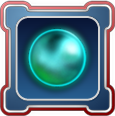
|
Knuckles Has Cleared Act 1
Despite not being able to normally finish a level, Knuckles has a proper level-completion animation and a set of voiceovers for responding to his rank. Knuckles can finish both of the levels in which he is playable (Flame Core and Aquatic Base) with the use of glitches, allowing for these quotes to be heard.
The quotes are as follows:
| Rank | Japanese Audio | English Audio | Transcription |
|---|---|---|---|
| S | よし!完璧だぜ All right! | ||
| A | よし!いい感じだ That felt good! | ||
| B | ま、こんなもんだろ Well, that wasn't TOO bad... | ||
| C | フン!手間取っちまったぜ Hmph! That took longer than I thought. | ||
| D | くそ!まだまだだな… Shoot! I've still got a ways to go... |
Unused Music
There are two unused audio tracks on the disc: silver_theme.xma and shadow_theme.xma. Silver's track seems to have MIDI backing put in place and lacks vocals, while Shadow's theme is the Magna-Fi version, untouched, from Shadow the Hedgehog. The used versions of these tracks are theme_silver.xma and theme_shadow.xma.
silver_theme.xma
A demo version of "Dreams of an Absolution", Silver's theme. The vocals are replaced with a synth lead. According to the songwriter, Bentley Jones, it was merely a placeholder that the developers forgot to take out.
Both this and the Shadow track were removed from the PS3 version. That version contains a couple unused tracks of its own, however:
boss_eggman1.at3
An early version of the Egg-Cerberus and Egg-Genesis boss theme. Certain instruments were made louder for the final game, and it appears to have MIDI instruments in place of certain real ones.
boss_eggman3.at3
Same as previous, but with the Egg-Wyvern boss theme instead.
Internal Project Name
The game's internal project name is "SonicNext", as evidenced by filenames and the leaked script. This is likely a reference to how it was the first new Sonic game for seventh-generation consoles, and makes sense given that the game was referred to as "Sonic Next-Gen" early in development. However, the original executable name for the final build of the Xbox 360 version is marathon.exe.
Oddities
| To do: One of these unreachable springs exists in Dusty Desert too. Document it and look for other odd out-of-bounds objects. |
Unreachable Spring in Kingdom Valley - Section A
In Kingdom Valley - Section A, there is an unreachable spring at co-ordinates (X: -26241.4, Y: 0, Z: 5035.69) - this spring has a LaunchSpeed value of 0, OutOfControl value of 0, and it targets nothing. It's present in the SET files for Kingdom Valley - Section A in retail and the Xbox Live Arcade Demo, as well as End of the World.
Unreachable 1-Up in End of the World - Section F
In End of the World - Section F (Amy's White Acropolis section), there is an unreachable 1-Up Capsule at the location that Sonic's normal White Acropolis B starts from.
Optical Camouflage
This mysterious texture file can be found in cache.arc, sporting nothing but saturated noise. The word "@komatu" is written in the center of the image which could refer to Takuma Komatsu, one of the game's programmers. The use of this file has been cleared up to be used on enemies when they go into cloak mode. The texture is called in render_main.lub and it is referenced as "OpticalCamouflage".
Licenses
On the root of the disc for both the Xbox 360 and PS3 versions exist BOOST.TXT, LUA5.TXT, and ZLIB123.TXT. These files contain the license information for Boost Software, a collection of C++ libraries, as well as the Lua scripting langauge and the Zlib compression format. Traditionally, the contents of these text files would be placed in the credits, but they're missing, even though the logos (with brief license info) for Havok, Kynogon, and Dolby Digital are all present there. Lua and Zlib are used in almost every file in the game, so it's not like these are left over from an earlier build of the game or anything. The exact text can be found in the Unused Text subpage.
Curiously, two of these licenses (the Boost and Lua ones) are present in the XBLA demo, as part of a promotional image that appears when beating the stage, and are also mentioned in the game's manual. The Zlib one is missing entirely from both places, however.
Internal Filenames
- The internal naming scheme of the music for stages usually follows this format: stg_(stage id)_(letter).xma. The letter corresponds with which section of the stage in which the music plays. However, Crisis City's tracks don't follow this as closely: the first two tracks are stg_csc_a.xma and stg_csc_b.xma respectively, but the mach speed section's track is called stg_csc_e.xma and the track for the section before it is called stg_csc_f.xma, which may imply both that Crisis City had many more areas in the past and also that the mach speed section was intended to be before that platforming section. The former is unlikely as the game is relatively sloppy internally, but the latter is supported by the fact that the "All" track on the OST uses this order.
- The track "Town Mission" uses the name stg_twn_shop.xma, which doesn't fit the syntax of the other Town Mission tracks. These are named twn_mission_comical.xma, twn_mission_slow.xma, and twn_mission_fast.xma respectively.
- Many of Sonic's internal files are referred to as sonic_new, likely because Sonic's model was changed from the one seen at Tokyo Game Show (TGS) 2005.
- The Gems were originally supposed to be Chaos Emeralds, as evident in the Rainbow Gem being referred to as Emerald_S in the game's code.
Other
- All of the textures used in the background of the stages' previews are much wider than they need to be: 2048 pixels. By contrast, they are only 512 pixels tall, since those screens leave space on the top and bottom. The extra space to the right of the 1,280 used pixels is simply black and does not appear to serve a purpose, as the only reason why they would need to be a power of 4 would be for mipmapping, which they don't really need either.
- HUD and voice files exist for the PS3 version in the Xbox 360 version. The HUD file specifically contains both the Xbox and PS3 button prompts within the same file.
- One of the two parameters for input_method within the players' LUB files is input_method_mario64. The parameter is used for most Amigo characters, while Sonic and Shadow use input_method_sonic_v1. The reason for this naming scheme is unknown.
- Editing Sonic's .lub file to use Blaze or Knuckles' homing attack module causes his air dash to follow a downward curve (similarly to the XBLA demo's, but with less weight), and this also allows the player to air dash into the ground to gain full speed. This is likely an early version of the air dash in the demo, which was probably planned to be present in the final game. Shadow and the White Gem lack this behavior.
- Many characters have some of Silver's code in their configuration files, namely the line psi_power, which determines how much power Silver should have for his Psychokinesis.
